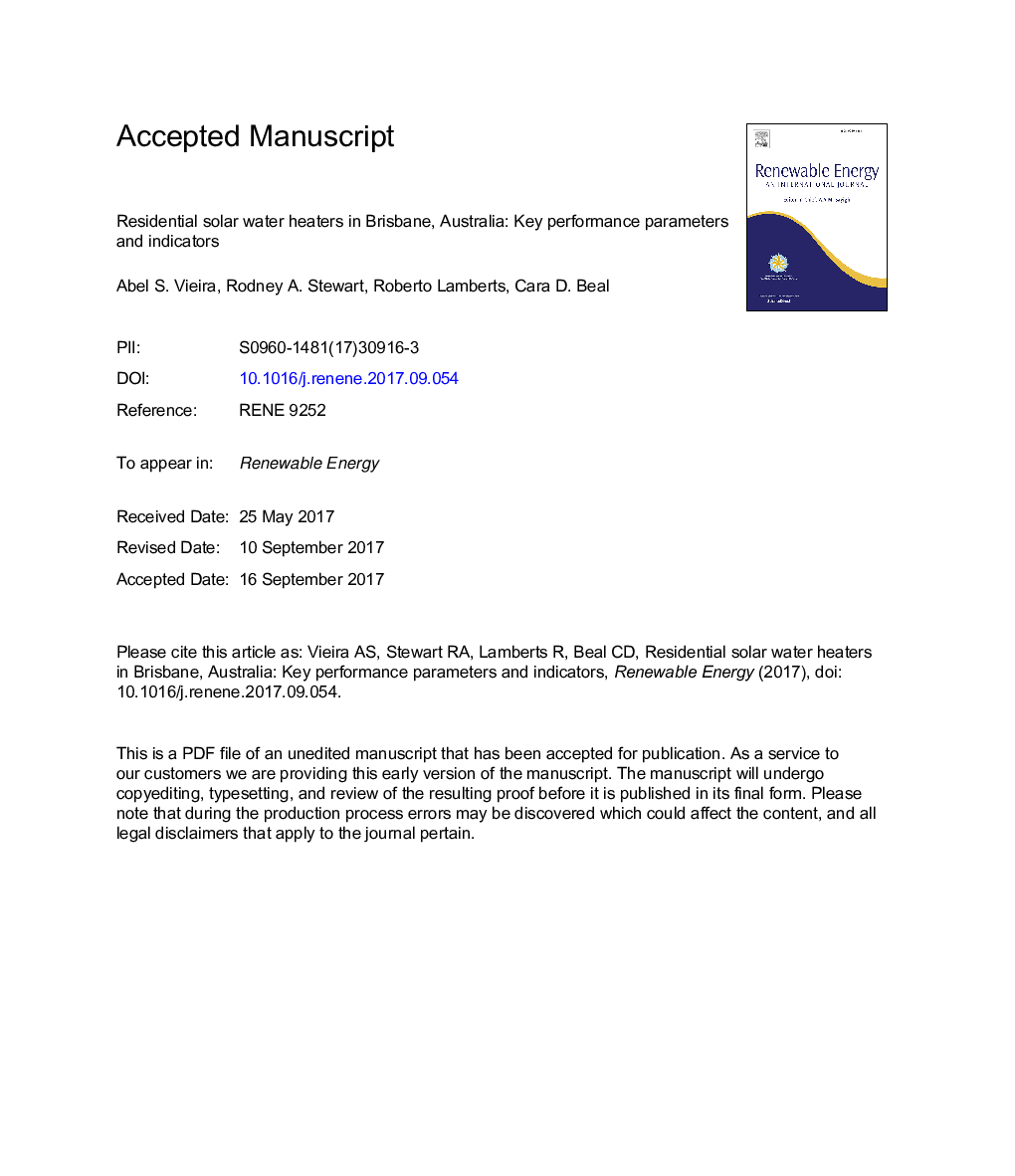| کد مقاله | کد نشریه | سال انتشار | مقاله انگلیسی | نسخه تمام متن |
|---|---|---|---|---|
| 4925887 | 1431589 | 2018 | 21 صفحه PDF | دانلود رایگان |
عنوان انگلیسی مقاله ISI
Residential solar water heaters in Brisbane, Australia: Key performance parameters and indicators
ترجمه فارسی عنوان
آبگرمکن های خورشیدی مسکونی در بریزبن، استرالیا: پارامترهای اصلی و شاخص های عملکرد
دانلود مقاله + سفارش ترجمه
دانلود مقاله ISI انگلیسی
رایگان برای ایرانیان
کلمات کلیدی
آبگرمکن خورشیدی، تجزیه و تحلیل میزان حساسیت، متغیرهای خاص سایت، مشخصات فنی، عملکرد انرژی، سطح خدمات،
موضوعات مرتبط
مهندسی و علوم پایه
مهندسی انرژی
انرژی های تجدید پذیر، توسعه پایدار و محیط زیست
چکیده انگلیسی
A multi-parametric sensitivity analysis of Solar Water Heater (SWH) systems was undertaken for the city of Brisbane in Australia using computational models calibrated by experimental data. The models were calculated using EnergyPlus 8.6. The following technical specification parameters were assessed in the modelling: (i) solar collector efficiency; (ii) solar collector area; (iii) tank volume; (iv) tank heat loss; (v) electric back-up heating power rate; (vi) electric back-up heating position (height) for vertical tanks; and (vii) electric back-up heating temperature range. The site-specific parameters included: (i) solar collector direction; (ii) solar collector tilt angle; (iii) solar collector shadowing; (iv) solar collector dust accumulation; (v) hot water pipe insulation; (vi) hot water pipe length; (vii) electricity tariff time-of-use; and (viii) cold water temperature. User behaviour patterns were comprised of the following parameters: (i) end-use water temperature; (ii) end-use water demand; and (iii) end-use time-of-use. For all parameters, two system types were assessed, namely: (i) thermosiphon systems with natural (passive) circulation in collectors and unstratified horizontal hot water storage tanks; and (ii) split systems with forced (pumped) circulation in collectors and stratified vertical hot water storage tanks. The performance of SWHs was analysed considering both energy performance indicators (i.e. total and peak-hour energy consumption, solar fraction and energy intensity) and level of service indicators (i.e. compliance with recommended hot water temperatures for Legionella spp. control and comfort levels). Notwithstanding the prevalence of thermosiphon systems among SWH technologies, results indicate that split systems usually outperformed thermosiphon systems both in terms of energy efficiency and level of service, and hence should be a preferred option for energy efficiency initiatives and policies.
ناشر
Database: Elsevier - ScienceDirect (ساینس دایرکت)
Journal: Renewable Energy - Volume 116, Part A, February 2018, Pages 120-132
Journal: Renewable Energy - Volume 116, Part A, February 2018, Pages 120-132
نویسندگان
Abel S. Vieira, Rodney A. Stewart, Roberto Lamberts, Cara D. Beal,
